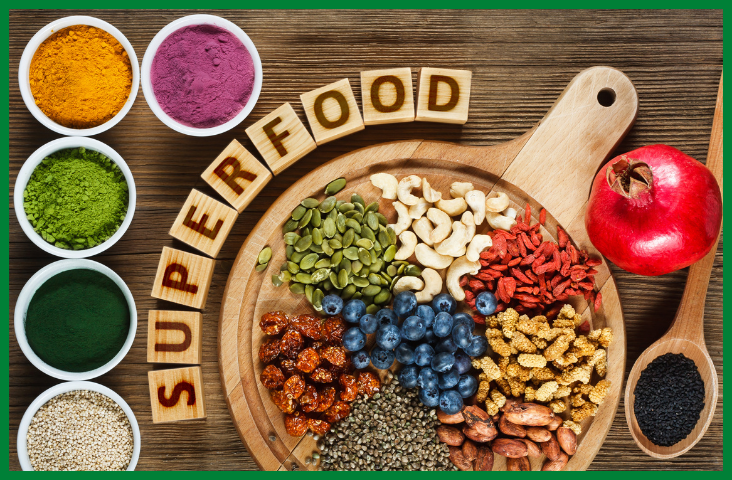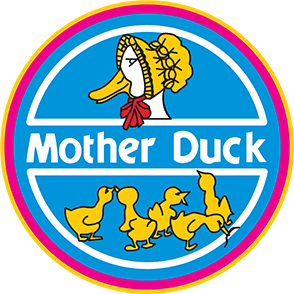
Superfood Superconfusion
Superfoods – we hear that word so often, frequently attached to yet another food fad and promising anything from a longer life to less wrinkles (that’s for the grown-ups, not the kids!). But what does it mean? Should we and our children eat all the ‘superfoods’ we hear about? If we did we’d probably be broke, since they’re often eye-wateringly expensive. Here are the facts, to cut through the hype.
What are ‘superfoods’?
You may be surprised to hear that the word ‘superfood’ doesn’t have any formal definition in nutrition. It’s simply a marketing term. Once it was mostly used to describe foods that were particularly high in a certain nutrient. However, it’s now slapped onto anything from fruit smoothie packaging to menu items in cafes, frequently by people with no nutrition training whatsoever. So it’s important to be cautious about any ‘superfoods’ being promoted. Also note that while some ‘superfoods’ have a lot of science to back them up, others have little or none.
Some superfoods will claim to be great sources of nutrients we’ve all heard of, such as blueberries being high in vitamin C. However others will mention nutrients that most of us are not familiar with, such as flavonoids, lycopene or quercetin. These are nutrients that may also be beneficial to our bodies but are not essential like the vitamins and minerals. They are known as phytochemicals (meaning plant chemicals) and are produced by plants for purposes such as warding off viruses and bacteria. And over the past decade or two, science has been revealing that they may be helpful to us too. They work in varied ways, including acting as antioxidants (which may play a role in preventing cancers and heart disease) and combatting viruses. Most research is more pertinent to adults, but that doesn’t mean there aren’t benefits for children too.

Which superfoods or phytochemicals deserve some attention?
I’m not going to mention all the phytochemicals here – many thousands have been identified so I doubt you’d want to read about them all. And I’m not going to discuss all the foods that have been proposed as superfoods – again there are too many to mention and frequently they’re no more ‘super’ than anything we already have in our fruit bowl. What I will do is highlight a few phytochemicals and food types for which there has been a lot of research, so they’re not just the latest fad – they have a genuine scientific backing.
Flavonoids – This family of phytochemicals are found in a diverse range of foods, including citrus fruits like oranges and grapefruit; fruits with blue, red and purple colours such as blueberries, strawberries and grapes; green tea; soybeans and pomegranates. Potential benefits are just as diverse – research has indicated that different flavonoids may play protective roles against health problems including asthma, heart disease and some cancers, as well as having antibacterial and antiviral properties. Note that research into these areas is still at an early stage, and scientists are not yet sure what, or how strong, a role flavonoids may play in these diseases.
Carotenes – A range of different phytochemical substances, the carotenes are found in yellow, orange and red fruits and vegetables, such as carrots (hence the name), tomatoes and pumpkin. They’re also in green leafy veggies such as spinach and kale. Possible benefits range from reducing the risk of macular degeneration (a type of eye damage) to lowering the risk of heart disease and certain cancers.
Brassicas – This is a family of vegetables. Big players on this list include the generally child-friendly broccoli as well as sometimes less popular Brussels sprouts, cauliflower and cabbage. They contain a range of vitamins and minerals, plus fibre, and also provide the glucosinolate family of phytochemicals. There’s a wealth of research into this group of vegetables, particularly in the area of cancer prevention.
Berries – From raspberries and strawberries to blueberries or the hyped acai or goji berries, these small fruits pack a big nutrition punch. As well as being generally very high in vitamin C, other vitamins and fibre, they also contribute to the flavonoids mentioned above. They are more expensive fruits to buy, however stocking your freezer with frozen berries can keep costs lower.
Legumes, such as soybeans, lentils, chickpeas and dried beans – Not only do beans and legumes provide a healthy serve of protein, they also contain soluble fibre which helps to give them a low GI – this means they will help keep kids (and adults!) fuelled for a long time. As a bonus legumes are rich in minerals such as iron and zinc. And for the adults, if you eat legumes regularly, the soluble fibre may also aid in controlling cholesterol levels.

Oats – This is another food that has a low GI, making oat-based foods like porridge great fuel foods. And, again, adults who eat oats regularly may benefit from lower cholesterol levels.
Oil-rich fish – As we’ve covered in these newsletters before, oil-rich fish, such as salmon, sardines, and some types of canned tuna, really is brain food for babies and small children. The omega-3 oils they contribute are essential for growing brains and eyes, plus researchers are investigating a multitude of other potential benefits including a possible reduction in the risks of developing asthma or depression, as well as the well-known reduction in heart disease levels. Of course, fish doesn’t only contain omega-3 fats; it’s also a great source of protein for growing bodies, plus vitamins and minerals including zinc, iodine and vitamin B12.
Many of you will know that there are limits on the amount we should consume of some types of fish, especially for pregnant women and young children. If you’re want to read more about it, this webpage has useful information: http://www.foodstandards.gov.au/consumer/chemicals/mercury/documents/mif%20brochure.pdf
So what should my child eat?
Does this mean we should base all our children’s or our own meals around the foods on these lists? Absolutely not. There are a few things I’m hoping will be clear from the list of foods above.
Eat a rainbow – Many of the foods mentioned in the groups above are brightly coloured fruits and vegetables, and this is where a huge number of the beneficial phytochemicals are found. So if there’s one important message about superfoods or phytochemicals, it’s to eat a rainbow of different coloured fruits and vegetables.

We don’t know everything yet – Research into all of these ‘superfoods’ and phytochemicals is ongoing, while new ‘superfoods’ are popping up all the time. And most of them are brightly coloured fruits and vegetables. So just because the frozen peas on your dinner plate haven’t made the headlines yet, there’s no reason to believe that they won’t be in the news in the months to come.
Balance is key – Sometimes particular superfoods are promoted so strongly that we might almost believe we don’t need to eat anything else. However, this could never be the case. All foods have a mix of nutrients, such as vitamins, minerals and protein, and none contain all the nutrients our bodies require. This is why we need a ‘balanced’ diet made up from the different food groups: fruit; vegetables and legumes/beans; milk, yoghurt, cheese and/or other alternatives; grain (cereal) foods; and lean meat and poultry, fish, eggs, tofu, nuts and seeds and legumes/beans. We can make ‘super’ choices from those groups, but they are all necessary for good health and children’s growth and development.

Can I take a supplement instead?
People who have fussy kids or aren’t so keen on their fruit or veg themselves might be wondering if it’s possible just to take a supplement instead. While some phytochemicals and all vitamins and minerals are available in supplement form, research often indicates that they’re not as effective as when eaten in the foods themselves. This may be due to interactions with other phytochemicals or nutrients in the foods. Plus there’s the fact that there are other beneficial nutrients in whole foods (possibly including some that scientists haven’t identified yet). So eating the food itself is best whenever possible.
Superfoods vs super-essential foods
The bottom line is that it’s best to focus on a healthy, balanced and varied eating pattern. Encourage your children to enjoy a rainbow of coloured vegetables and fruits. (I know this can be easier said than done! Check out my blog from 24.3.22 for ideas to help with this.) Including some slow-release fuel foods, such as healthy grain foods and legumes, will give kids energy for days of playing and learning. And oil-rich fish (if you eat fish) and legumes are great choices for some of children’s protein foods. By all means choose ‘superfoods’ for some of these, within the food groups that children are eating anyway. But do remember that balance is everything.
©Fiona Hinton 2022
MEDICAL DISCLAIMER: Please note that this blog is for general information only, and should not be taken as a substitute for qualified medical advice. Please discuss medical issues with your child’s doctor before taking any action.
About Fiona: Fiona Hinton is a dietitian, but describes herself as a nutrition translator, taking the science of nutrition and translating it into foods we love to eat, to nourish both body and soul. She has over 20 years of experience as a dietitian, working in a wide range of areas from hospital wards to running her own private practice. Fiona has a special interest in children’s nutrition. As a mum of three school-age boys, she has first-hand experience of the issues associated with feeding young children, such as weaning and fussiness. Fiona specialises in real-life strategies and practical suggestions to convert nutrition advice into food kids will eat. Fiona has collaborated on several books, including one with best-selling children’s food writer Annabel Karmel, as well as training childcare staff in children’s nutrition.


